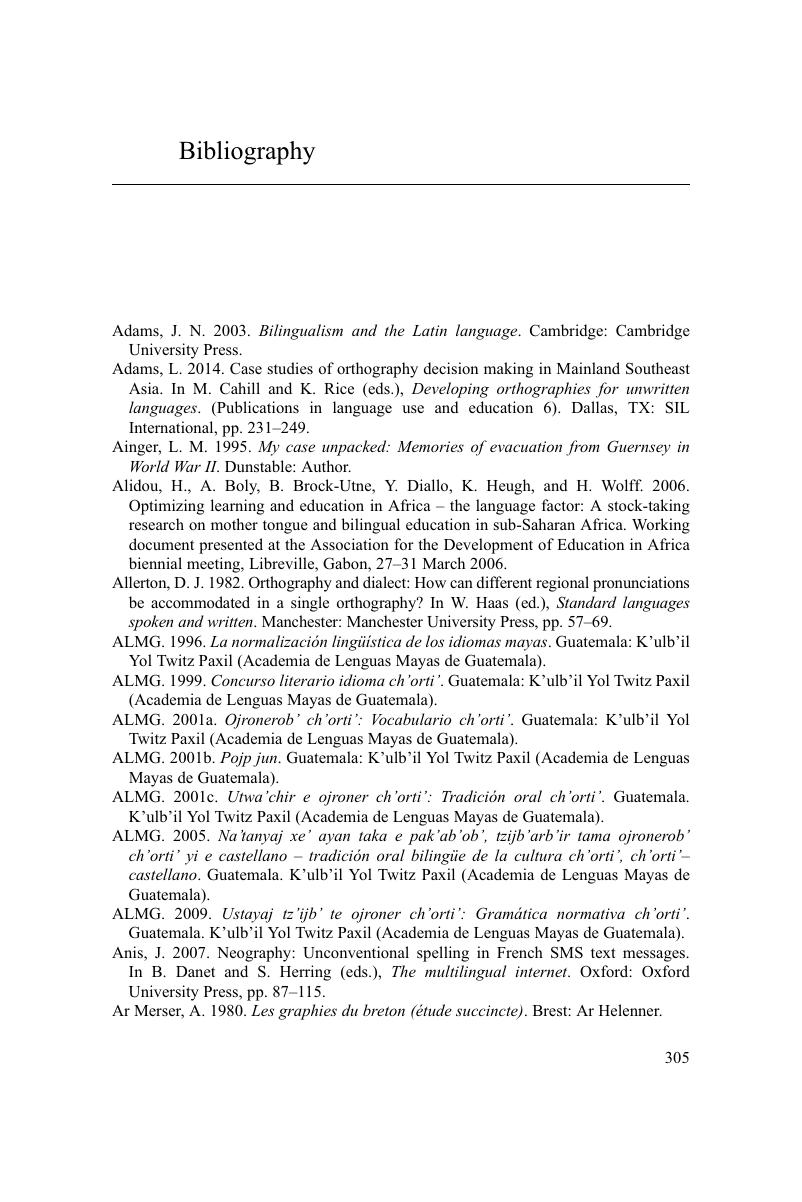Book contents
- Creating Orthographies for Endangered Languages
- Creating Orthographies for Endangered Languages
- Copyright page
- Dedication
- Contents
- Contributors
- 1 Creating Orthographies for Endangered Languages
- 2 Who Owns Vernacular Literacy? Assessing the Sustainability of Written Vernaculars
- 3 Hearing Local Voices, Creating Local Content: Participatory Approaches in Orthography Development for Non-Dominant Language Communities
- 4 Orthographies ‘In the Making’: The Dynamic Construction of Community-Based Writing Systems among the Náayeri of North-Western Mexico
- 5 Community-Driven, Goal-Centred Orthography Development: A Tsakhur Case Study
- 6 Writing for Speaking: The Nǀuu Orthography
- 7 Reflections on the Kala Biŋatuwã, a Three-Year-Old Alphabet from Papua New Guinea
- 8 When Letters Represent More Than Sounds: Ideology versus Practicality in the Development of a Standard Orthography for Ch’orti’ Mayan
- 9 The Difficult Task of Finding a Standard Writing System for the Sioux Languages1
- 10 Orthography Development in Sardinia: The Case of Limba Sarda Comuna
- 11 Breton Orthographies: An Increasingly Awkward Fit
- 12 Spelling Trouble: Ideologies and Practices in Giernesiei/Dgernesiais/Guernesiais/Guernésiais/Djernezié …
- 13 Orthography Development on the Internet: Romani on YouTube
- 14 Orthography Creation for Postvernacular Languages: Case Studies of Rama and Francoprovençal Revitalization
- 15 Changing Script in a Threatened Language: Reactions to Romanization at Bantia in the First Century BC
- Bibliography
- Index
- References
Bibliography
Published online by Cambridge University Press: 30 August 2017
- Creating Orthographies for Endangered Languages
- Creating Orthographies for Endangered Languages
- Copyright page
- Dedication
- Contents
- Contributors
- 1 Creating Orthographies for Endangered Languages
- 2 Who Owns Vernacular Literacy? Assessing the Sustainability of Written Vernaculars
- 3 Hearing Local Voices, Creating Local Content: Participatory Approaches in Orthography Development for Non-Dominant Language Communities
- 4 Orthographies ‘In the Making’: The Dynamic Construction of Community-Based Writing Systems among the Náayeri of North-Western Mexico
- 5 Community-Driven, Goal-Centred Orthography Development: A Tsakhur Case Study
- 6 Writing for Speaking: The Nǀuu Orthography
- 7 Reflections on the Kala Biŋatuwã, a Three-Year-Old Alphabet from Papua New Guinea
- 8 When Letters Represent More Than Sounds: Ideology versus Practicality in the Development of a Standard Orthography for Ch’orti’ Mayan
- 9 The Difficult Task of Finding a Standard Writing System for the Sioux Languages1
- 10 Orthography Development in Sardinia: The Case of Limba Sarda Comuna
- 11 Breton Orthographies: An Increasingly Awkward Fit
- 12 Spelling Trouble: Ideologies and Practices in Giernesiei/Dgernesiais/Guernesiais/Guernésiais/Djernezié …
- 13 Orthography Development on the Internet: Romani on YouTube
- 14 Orthography Creation for Postvernacular Languages: Case Studies of Rama and Francoprovençal Revitalization
- 15 Changing Script in a Threatened Language: Reactions to Romanization at Bantia in the First Century BC
- Bibliography
- Index
- References
Summary

- Type
- Chapter
- Information
- Creating Orthographies for Endangered Languages , pp. 305 - 330Publisher: Cambridge University PressPrint publication year: 2017



